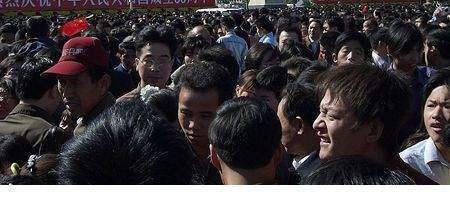A single mutation around 30,000 years ago appears to be responsible for several traits common in East Asian peoples, from thicker hair to denser sweat glands.

A team led by Harvard researchers has modeled the spread of the mutation across Asia and North America, concluding that it most likely arose in central China.
“There are three parts to this study,” says Professor Mark Thomas of University College London.
The mutation was found in a gene for ectodysplasin receptor, or EDAR, part of a signalling pathway known to play a key role in the development of hair, sweat glands and other skin features. While human populations in Africa and Europe had one ancestral version of the gene, most East Asians have a derived variant, EDARV370A, which studies have linked to thicker scalp hair and a different tooth shape.
When the team examined the fingertips of Chinese volunteers at colleges and farming villages, they found that the sweat glands of Han Chinese, who carry the derived variant of the gene, were packed about 15 percent more densely than those of a control population with the ancestral variant.
Meanwhile, computer models run at UCL suggest that the derived variant of the gene emerged in central China between 13,175 and 39,575 years ago. The team believes it’s at least 15,000 years old, predating the migration from Asia by Native Americans, who also carry the mutation.
This suggests that different traits could have been under selection at different times. The mutation’s many effects only complicate the question. If changes to the sweat glands conferred an advantage in new climates — one of the theories the researchers plan to explore further — changes to hair and to mammary glands could have conferred others at other times.
“What seems unlikely is that the same traits were advantageous throughout the whole of the last 30,000 years; prior to 10,000 years ago the climate was cold and highly variable, but for the last 10,000 years it has been much warmer and relatively stable,” says UCL PhD student Dr Pascale Gerbault.
“So perhaps one trait was favoured when it was colder and another when it became warmer. Maybe one of the less visible traits was selected early on, leading to a rise in the frequency of a more visible trait like thicker hair, which was later selected as a cultural preference.”






